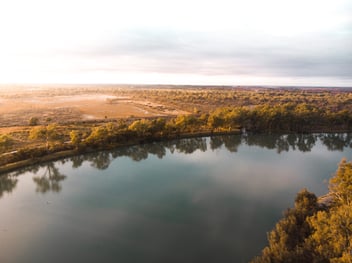Recovery programs for Murray-Darling Basin results in water savings
Water has been recovered from a combination of infrastructure investment, water purchase and other state government recovery activities since the plan was agreed upon in 2012.
The MDBA’s interactive southern basin water recovery map details the amount of water recovered within each region, comparing recovery through infrastructure and purchase.
MDBA Chief Executive Phillip Glyde said the results will be used to better understand how water recovery has affected social and economic outcomes for communities within the basin.
"Our analysis found that, while the total water recovery in the 41 communities was 1033.9GL, once we factored in water savings from infrastructure efficiency programs, the net reduction to water available for production was substantially less at 810GL," Glyde said.
"That's because water recovered through investments in more modern and efficient water infrastructure is water that would otherwise have been lost to production – for example, due to evaporation or seepage.”
Glyde said the infrastructure initiatives have enabled more water to be retained by irrigators, which has less of an impact on communities in comparison to water purchasing as a means of recovery.
"These infrastructure programs allow a portion of the water saved to be retained by the irrigator, while the rest is transferred to the Commonwealth and counts towards the Basin Plan water recovery target,” he said.
“For the 41 communities we looked at, this meant almost 67GL of water that would otherwise have been lost remained available for productive use on-farm, while still returning 156GL to the environment.
“This confirms what we have already been hearing from communities – that recovering water through infrastructure rather than purchase lessens the impact of water recovery at the community level,” he added.

